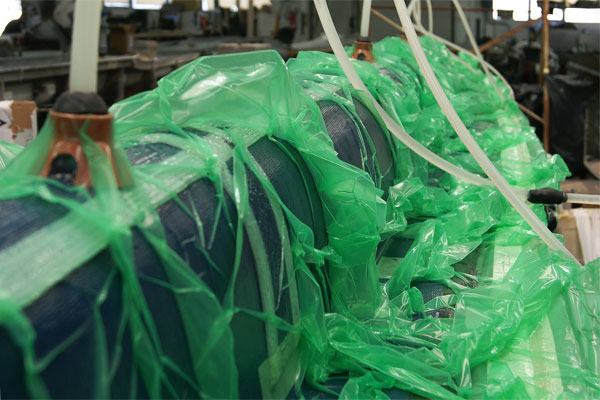There is a great expectation around the new Olympic-class F70 single scull, designed for elite Senior male rowers. It was delivered to the Filippi headquarters in the form of a master, just a few hours ago, directly from the company that manufactured it following our design. Next, the artifact will be treated with a lamination process that will transform it into the actual mold, following the C.A.D. profile designed by our engineers.
The
first water tests of the prototype have already been scheduled for
early February: they will be entrusted to rowers of absolute prestige,
whose names currently remain top secret. Nor is it certain whether the
tests will be carried out on an Italian rowing basin or an international
site.
The features
The certainty is that the F70 equipped with the Aliante carbon riggers was designed to cover the intermediate range that separates the experience of the F47 from that of the F39 (the boat with which Mahe Drysdale won the Rio Olympics) and it is optimized for an average weight of 90-100 kg.
The project is based on the knowledge gained from the senior single scull in previous competitive seasons to create an exceptionally performing boat for that segment of athletes who make power their strong point.
According to the calculations of our technicians, it takes 38 strokes per minute to reach maximum speed for a boat that, in terms of design, is wider than the F39 at the stern and has a rounder main section compared to the F14. A must of Filippi’s production, the Aliante carbon riggers will take care of the rest.

The study that created F70
It is necessary to analyze the engineering study at its origin to understand how this project came about.
Our technicians have defined the characteristics of the new model using three different CAD software: Catia v.5 to treat the surfaces; Creo v.8 for the volumes and, finally, Siemens’ NX, Star and Nastram for the structural calculations regarding constraints, forces and deformations, eventually arriving at the hydrodynamic simulations.

The process to get F70 mould
Once we completed the design, we commissioned the master to a specialized company. It is a model of 30 kilograms per cubic meter composite material, which was subsequently milled by a numerically controlled machine, according to the design lines, with a volume of cm.2 thicker than the original design.
A glass fabric was applied to the model so that it could have the necessary stiffness. Subsequently, an epoxy paste was applied on the surface, which increased its thickness by 4 centimeters before the model was brought back to its original size with a further final C.N.C. milling.

Now that it has arrived in our factories in Donoratico, the master will be suitably sanded and painted, not before a polishing and waxing session. Next, we will proceed to the epoxy infusion process using the vacuum pump.
Dry carbon fabrics will be spread on the model, followed by a resin impregnating them by compaction. Our high-temperature ovens will ensure the complete drying of the mould which, once pulled out from the master, will be painted for the building of the F70 prototype.

